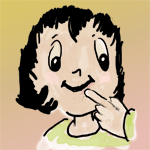Skip over navigation

Imagine a 3 by 3 by 3 cube hanging in front of you with just the front face facing you.
The cube is made up of 3 x 3 x 3, that is 27, small cubes.
You drill a hole through the four corner cubes, that are facing you, all the way through to the back.

A friend looks down on the cube, from above, and they also drill four holes through their four corner cubes all the way through to the bottom.
You and your friend examine all the 27 small cubes.
If you'd like more of a challenge, try Cube Drilling .
What happens during the first drilling?
Can you picture which cubes have holes now?
What happens during the second drilling?
Can you picture which cubes have holes now?


Or search by topic
Number and algebra
Geometry and measure
Probability and statistics
Working mathematically
Advanced mathematics
For younger learners
Start Cube Drilling
Age 5 to 7
Challenge Level 





- Problem
- Getting Started
- Student Solutions
- Teachers' Resources
Start Cube Drilling
This activity is all about imagining, like you might when you listen to a story or poem.
There is no need to write or draw anything
BUT talking about it could be good!

Imagine a 3 by 3 by 3 cube hanging in front of you with just the front face facing you.
The cube is made up of 3 x 3 x 3, that is 27, small cubes.
You drill a hole through the four corner cubes, that are facing you, all the way through to the back.

A friend looks down on the cube, from above, and they also drill four holes through their four corner cubes all the way through to the bottom.
You and your friend examine all the 27 small cubes.
QUESTION
How many small cubes will then have holes drilled in them?
If you'd like more of a challenge, try Cube Drilling .
Why do this problem?
The whole idea of this problem is to invite children to picture something in their mind and in this instance, pupils will need to be familiar with properties of a cube. Ideally, it would be good to encourage your class to tackle this challenge purely by trying to imagine what is happening. To convince you and each other of their solutions, they will need to explain particularly carefully what they are picturing, which can be quite tricky, and you may find that they gesticulate rather a lot! In order to reach a joint conclusion, you might find it helpful to make a model of the cube from interlocking cubes.Possible approach
To introduce the activity, it might be worth simplifying the problem by starting with a smaller cube (say 2 by 2 by 2). Invite them to picture this cube in their heads and ask questions, such as:- How many small cubes are there altogether? [8]
- How many corner cubes? [8]
- What other kinds of small cubes make up the cube? [none - they are all corner cubes]
You could then move on to picturing a 3 by 3 by 3 cube and probe in a similar way before trying this problem.
Introduce the challenge itself orally, giving each piece of information one at a time and pausing between each. At this stage, ask the class to work independently of each other. Once you have posed the question, explain that you'd like learners to continue to work alone for a short time. Give them chance to work on the solution.
After a suitable period of time, invite them to share their ideas with a partner. Warn them that they will have, say 15 minutes in order to reach a consensus and to be able to explain their reasoning to others. You could film pairs' explanations and watch a few as a whole class in the plenary, or during a subsequent lesson.
Introduce the challenge itself orally, giving each piece of information one at a time and pausing between each. At this stage, ask the class to work independently of each other. Once you have posed the question, explain that you'd like learners to continue to work alone for a short time. Give them chance to work on the solution.
After a suitable period of time, invite them to share their ideas with a partner. Warn them that they will have, say 15 minutes in order to reach a consensus and to be able to explain their reasoning to others. You could film pairs' explanations and watch a few as a whole class in the plenary, or during a subsequent lesson.
Key questions
Try to tell me what you are picturing in your mind.What happens during the first drilling?
Can you picture which cubes have holes now?
What happens during the second drilling?
Can you picture which cubes have holes now?
Possible extension
If your class would like more of a challenge having tried this problem, they could look at Cube Drilling.
Possible support
Having interlocking cubes available will be useful for those who are struggling with the visualisation and those who would like confirmation of their ideas.You may also like
Four Triangles Puzzle
Cut four triangles from a square as shown in the picture. How many different shapes can you make by fitting the four triangles back together?
A City of Towers
In this town, houses are built with one room for each person. There are some families of seven people living in the town. In how many different ways can they build their houses?

